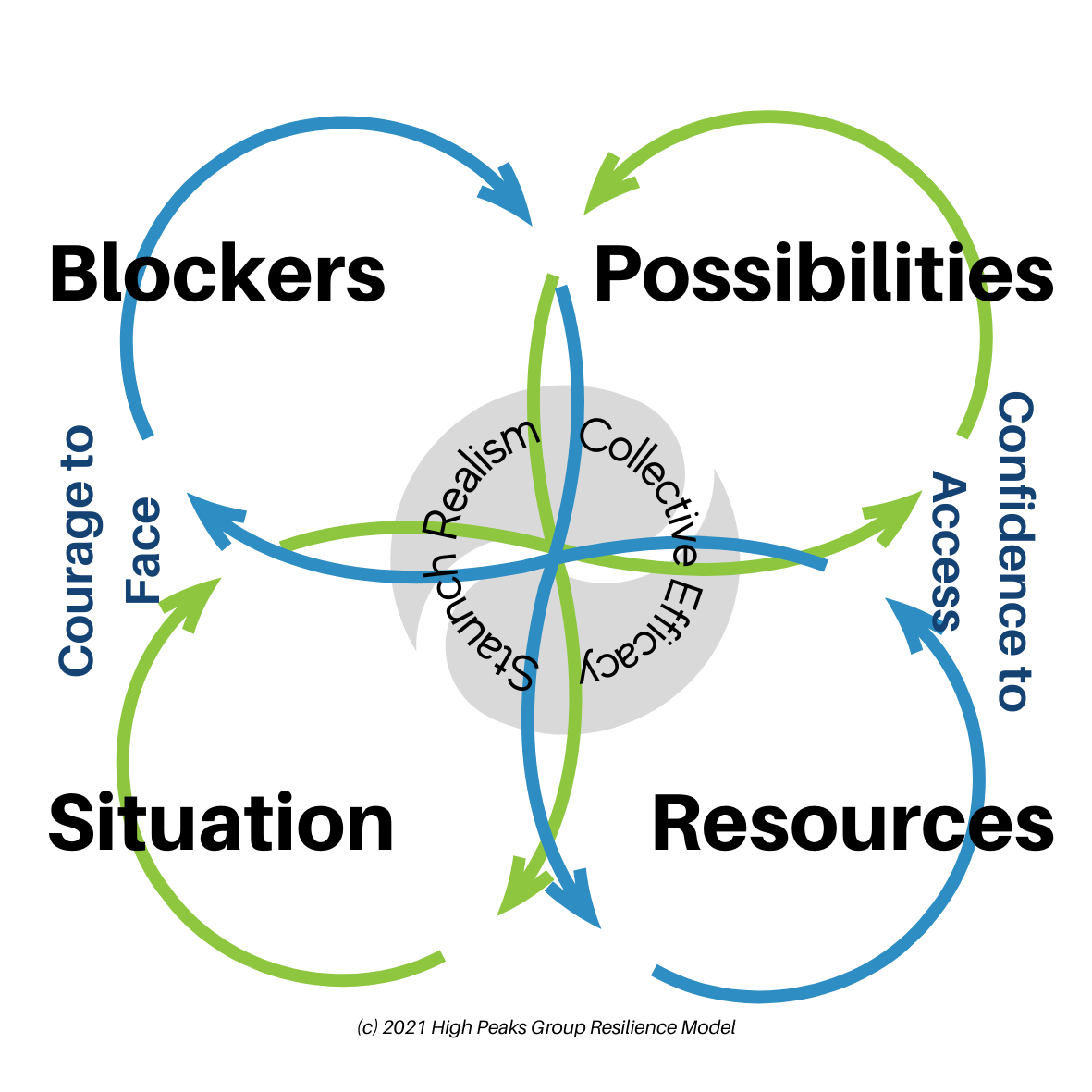Beyond Resilience: A Guide for Election Day
Election day in the United States is something of a ritual. We watch in anticipation as precincts report vote totals and the national map fills in. Some years the candidate we want gets elected, and some years the other candidate wins. We have our moment of relief when the outcome is what we want and expect, or we have our moment of disappointment if it isn’t. Afterwards, most of us move on.
This year, however, feels different. It is different. A global pandemic that has claimed hundreds of thousands of lives casts its grim shadow over everything we do. Suffering - long the providence of “someone else” - inches closer to our own reality as case totals and death tallies mount. Its cascading effects: economic instability; limited human contact; and reshaping how we work and live keep us off balance. And we still have all of the disappointments, sorrows, frustrations, inconveniences, and annoyances that - in an “ordinary” year - would be tough to handle.
We’re depleted. We’re exhausted. We’re running on fumes.
At this point, you might expect a list of tips and tricks to help get you back on track. Perhaps a list of mindfulness practices that help you bounce back. That ground’s been covered in other blogs and articles, and I am 100% supportive of anything that will get you grounded, focused, and restored. Please do things like: meditation, exercise, healthy eating, laughing, walks in nature, praying, etc. They really do help pull the mind out of a negative, reactive spiral.
But I want to talk about using this moment - election day - as an opportunity to grow.
My colleague Tanya James, Senior Managing Director of Positive Change & Development Pty Ltd, and I developed a resilience model that focuses on growing through challenges (not simply surviving them). At the heart of our model is the need to balance Staunch Realism and Personal Agency. That is, to grow during a tough time, it’s important to see the situation for what it really is and be very clear about the things you can/cannot control.
For example, the reality is that many people in the US are out of work, COVID cases are on the rise, we’re having an election tomorrow, and about half the country will be disappointed in the outcome of the election. That’s the truth. We could get ourselves wrapped around the axle thinking about all that’s troubling with that picture. But, the average person can control just a few things: looking for work/upskilling themselves, wearing a mask, voting, and thinking about how to react to the outcome of the election.
In our online course and virtual workshops, participants walk through a number of exercises to help them get clear about the reality of their situation. It starts with understanding what we call “My Triggered Self.” That is, what are the inputs (or patterns of inputs) that has your brain in reactive mode and not in rational mode? We then help participants build a picture of “My Resourced Self” by identifying and cataloging things they already have on hand to support their growth through challenges. Only then do we ask participants to bring “The Situation” into clearer focus by stating reality in plain, objective terms. Finally, participants are ready to move forward on their growth path by imagining new - and realistic - possibilities for the future.
Imagine how this might work for you on Wednesday or Thursday of this week (or whenever the election outcome is known):
My Blockers: The election results are finalized and you must first manage your response to the outcome. Our “See It; Slow It; Own It” strategy comes in handy here.
My Resources: You then identify and use resources you already have and get poised for forward momentum. Mapping self qualities, skills/knowledge, and social supports helps.
The Situation: You look at the landscape from an objective perspective with as much passion as you would if you were looking at a map. We recommend writing a one sentence summary with few adjectives.
The Possibilities: With some routes closed off and others opened, you can now list your realistic options to move forward. The way forward is pre-filtered so you don’t end up acting on impulse or against your own better judgment.
This strategy isn’t necessarily only for election night. It’s a great approach for individuals or teams facing difficult times, as well. In fact, Tanya and I have piloted our digital course for 200 leaders in the mountain resort (ski) industry - an industry facing incredible challenges not only from COVID, but global warming, declining interest in skiing among young people, lack of racial diversity, high cost of participation, corporate consolidation, and many other factors. The results are promising as participants report having a solid framework for dealing with continued uncertainty and volatility this winter.
But, first things first. Vote. Then, create your plan for how to productively respond to the outcome - regardless of who wins.


